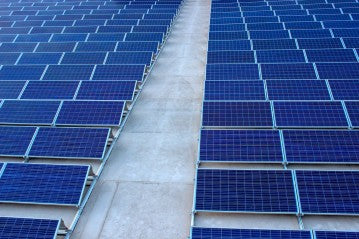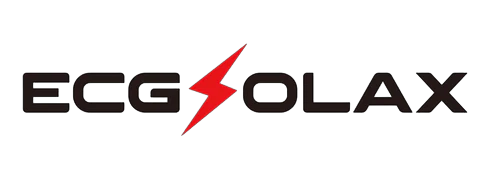
As the demand for renewable energy continues to grow, many homeowners and businesses are investing in solar energy solutions to reduce their carbon footprint and save on electricity costs. Solar inverters play a crucial role in converting the direct current (DC) produced by solar panels into usable alternating current (AC) for our electrical devices. However, some individuals may wonder about the compatibility and potential risks associated with using a generator alongside a solar inverter. In this blog post, we will explore the relationship between solar inverters and generators, discuss potential risks, and highlight circumstances that could potentially damage a solar inverter.
Understanding Solar Inverters and Generators
Solar Inverters: A solar inverter is an essential component of any solar energy system. It acts as the interface between the solar panels and the electrical grid, converting the DC power generated by the solar panels into AC power. This conversion enables us to power our appliances, lighting, and other electrical devices.
Generators: On the other hand, a generator is a device that produces electricity by converting mechanical energy into electrical energy. Generators are typically used as a backup power source during blackouts or in off-grid locations where there is no access to the electrical grid.
Compatibility Between Solar Inverters and Generators
When it comes to using a generator with a solar inverter, compatibility is a crucial factor to consider. While it is technically possible to connect a generator to a solar inverter, it is essential to ensure that the two devices are compatible. This compatibility can vary depending on the specific models and brands of the solar inverter and generator. It is recommended to consult with a qualified solar professional or the manufacturers to determine the compatibility between the two devices before connecting them.
Potential Risks of Using a Generator with a Solar Inverter
While using a generator with a solar inverter is feasible in some cases, there are potential risks associated with this setup. It is essential to be aware of these risks to make informed decisions.
1. Voltage and Frequency Instability: Generators often produce power with voltage and frequency fluctuations. These fluctuations can strain the electrical components of a solar inverter, potentially leading to malfunctions or even failure. To mitigate this risk, it is advisable to use a generator with a stable voltage and frequency output or invest in additional protective equipment, such as voltage stabilizers or power conditioners.
2. Dirty Power Output: Another concern is the quality of power output from generators, often referred to as "dirty power." This power may contain harmonic distortions, voltage spikes, or other irregularities that can damage sensitive electronic devices like solar inverters. Employing power conditioning equipment, such as surge protectors or line filters, can help mitigate these issues.
3. Overloading: Connecting a generator with a solar inverter without considering the total power load can lead to overloading. Overloading occurs when the combined power demand from electrical devices exceeds the generator's capacity. This can result in overheating, tripped circuit breakers, or damage to the generator or solar inverter. It is essential to calculate the total power requirements and ensure the generator can handle the load before connecting it to the solar inverter.
4. Incorrect Connection: Improperly connecting a generator to a solar inverter can cause electrical damage to both devices. It is crucial to follow the manufacturer's guidelines and consult with a qualified professional to ensure correct wiring and connections.
5. Compatibility Issues: Different solar inverters and generators may have varying connection requirements or communication protocols. Incompatible devices may not work together or can cause damage. It is crucial to verify compatibility between the solar inverter and generator, ensuring that the communication and electrical interfaces are compatible.
What Circumstances Can Damage a Solar Inverter?
While generators pose potential risks, there are several other circumstances that can damage a solar inverter even without a generator in the system. It is important to be aware of these factors to maintain the longevity and performance of your solar energy system.
1. Overloading: Overloading occurs when the power demand exceeds the capacity of the solar inverter. Operating the inverter beyond its limits can result in overheating, reduced efficiency, and even failure. It is crucial to properly size the solar inverter based on the power requirements of your electrical devices and the solar panel array.
2. Voltage Fluctuations: Unstable or fluctuating voltages, either from the electrical grid or other sources, can put stress on the solar inverter. Voltage spikes or drops can damage the sensitive electronic components inside the inverter. Employing voltage regulation equipment, such as surge protectors or voltage stabilizers, can help safeguard the inverter from these fluctuations.
3. Poor Quality Components: Using low-quality or incompatible components in your solar energy system, including wiring, fuses, or connectors, can lead to system inefficiencies and potential damage to the inverter. It is essential to invest in high-quality components that meet industry standards and are compatible with your solar inverter.
4. Extreme Temperatures: Solar inverters are designed to operate within specific temperature ranges. Exposing the inverter to extreme heat or cold can affect its performance and lifespan. Proper ventilation and installation in suitable environments can help mitigate the risks associated with extreme temperatures.
5. Environmental Factors: Environmental factors such as excessive humidity, dust, or corrosive substances can impact the performance and longevity of a solar inverter. Regular maintenance, including cleaning and inspections, can help prevent potential damage caused by these environmental factors.
6. Improper Installation: Poor installation practices can jeopardize the performance and safety of a solar inverter. It is crucial to have the solar energy system installed by qualified professionals who follow industry standards and manufacturer guidelines.
7. Electrical Surges: Electrical surges caused by lightning strikes or power grid fluctuations can pose a risk to the solar inverter. Installing surge protection devices and grounding systems can help safeguard the inverter from the damaging effects of electrical surges.
Conclusion
While it is technically possible to connect a generator to a solar inverter, compatibility and potential risks should be carefully considered. Voltage and frequency instability, dirty power output, overloading, incorrect connections, and compatibility issues are potential risks associated with using a generator with a solar inverter. Additionally, circumstances such as overloading, voltage fluctuations, poor quality components, extreme temperatures, environmental factors, improper installation, and electrical surges can damage a solar inverter independently. To ensure the longevity and optimal performance of your solar energy system, it is advisable to consult with qualified professionals, follow manufacturer guidelines, and take necessary precautions to protect your solar inverter.



0 Kommentare